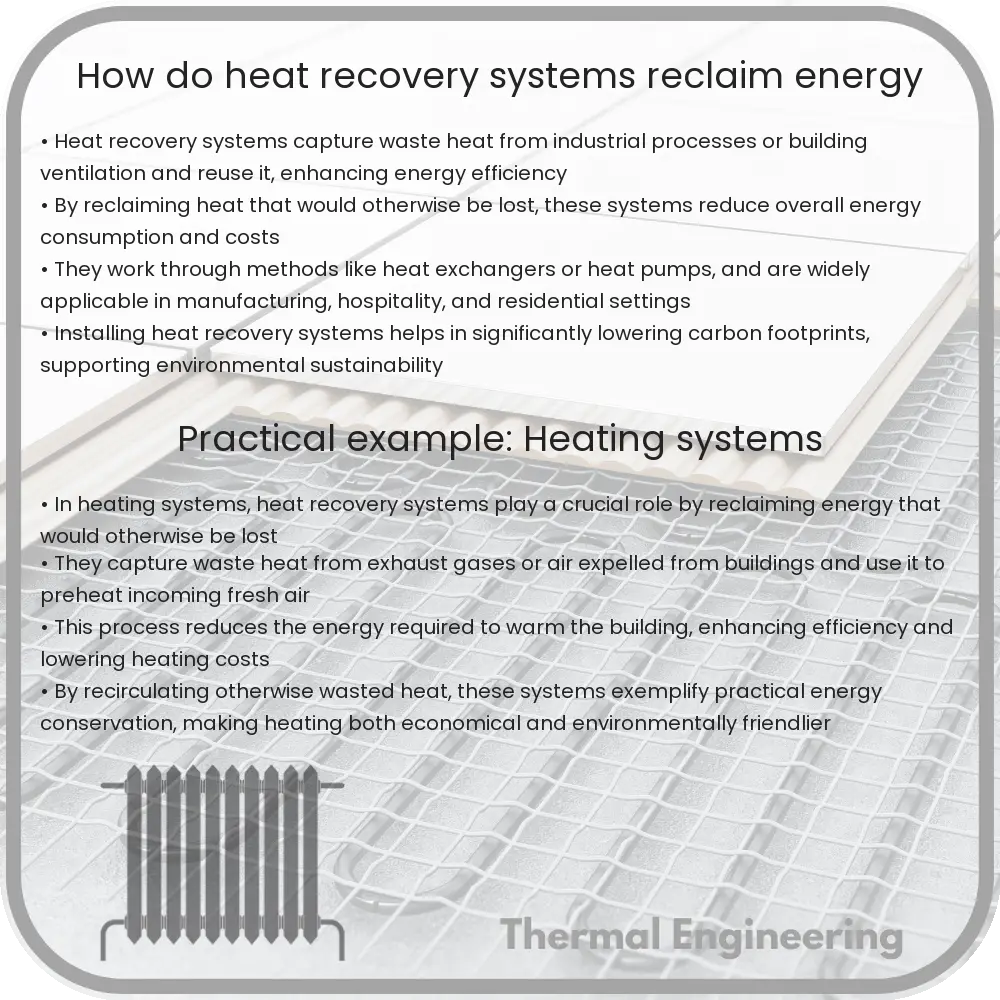Learn how heat recovery systems enhance energy efficiency by reclaiming waste heat in various industries and HVAC applications.

Understanding Heat Recovery Systems
Heat recovery systems are an integral part of modern engineering that help improve energy efficiency by reclaiming heat that would otherwise be lost in industrial processes or during the heating, ventilating, and air conditioning (HVAC) of buildings. This article explains how these systems work and the principles behind their operation.
What is a Heat Recovery System?
A heat recovery system captures residual heat that would typically be expelled into the environment as waste from processes or equipment. It then recycles this heat for other purposes, which may include heating air or water, thus reducing the overall energy consumption and improving the efficiency of the thermal system.
Types of Heat Recovery Systems
- Heat Exchangers: Used in both industrial and HVAC applications, heat exchangers transfer heat from a fluid (liquid or gas) that is at a higher temperature to another at a lower temperature without the two mixing directly.
- Heat Recovery Ventilation (HRV): Common in residential and commercial buildings, HRVs transfer heat from outgoing stale air to incoming fresh air during the ventilation process.
- Energy Recovery Ventilation (ERV): Similar to HRVs, ERVs also capture moisture along with heat, thereby improving both the energy and humidity efficiency of the system.
How Do Heat Recovery Systems Work?
At the core of most heat recovery systems is the principle of heat transfer. Here are the steps typically involved:
- Capturing Waste Heat: The system begins by capturing excess heat from a process or exhaust system, which would otherwise be lost to the environment. This is often facilitated by some form of heat exchanger.
- Transfer of Heat: The captured heat is then transferred to the recovery system. Depending on the type of system, this might involve direct or indirect contact between the heat source and the heat sink.
- Utilization of Recovered Heat: After the heat is transferred to the heat sink, it is then utilized to preheat fresh air or cold inlet streams in industrial processes or HVAC systems, reducing the need for additional energy to heat them up to the required temperature.
Applications of Heat Recovery Systems
Heat recovery systems find applications across a broad spectrum of industries as well as in residential and commercial buildings:
- Industrial: In industries, these systems can significantly reduce energy costs by recovering heat from furnace gases, boiler flue gases, and other waste streams.
- Built Environment: In residential and commercial buildings, recovering heat from exhaust air can extensively cut heating costs and also help in maintaining adequate indoor air quality.
- Power Plants: In thermal power plants, heat recovery systems can maximize efficiency by capturing and reusing the heat from exhaust steam in the cooling towers.
Economic and Environmental Impact
Implementing heat recovery systems can lead to substantial economic savings and environmental benefits. By reducing the demand for energy through the re-use of waste heat, these systems decrease fuel consumption, hence lowering greenhouse gas emissions and other pollutants. Moreover, the financial savings from reduced energy costs often pay back the initial investment in the heat recovery equipment within a few years.
Conclusion
In conclusion, heat recovery systems are vital tools in the quest for energy efficiency across various sectors. By understanding and deploying these systems, engineers can dramatically reduce energy consumption and environmental impact, creating a more sustainable future.